In her new book, Hayley Campbell seeks to demystify death by sharing the perspectives of funeral home directors, gravediggers and others
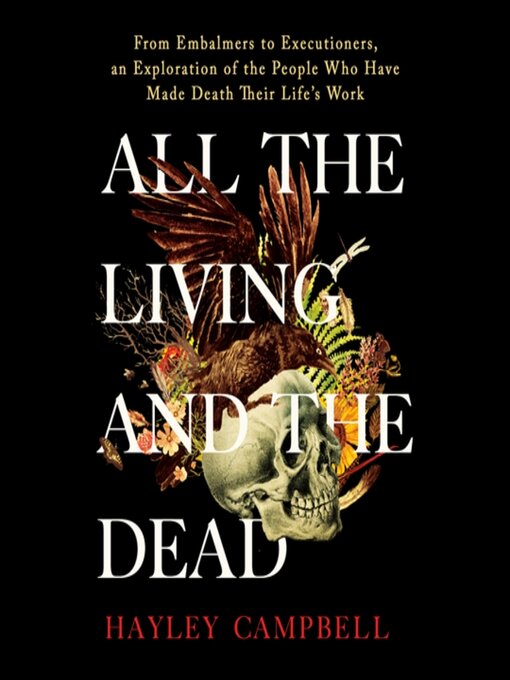
What happens when people die is often glossed over. Yet as the adage goes, death is one of life’s few certainties.
Journalist Hayley Campbell in her new book, “All the Living and the Dead: From Embalmers to Executioners, an Exploration of the People Who Have Made Death Their Life’s Work,” sets out to demystify death by writing about “the naked, banal reality of this thing that will come to us all.”
It’s a subject for which Campbell, 36, has been preparing for most of her life. As a little girl, she recalls death being ever present — she drew dead bodies after seeing her comic book artist father’s graphic novel about Jack the Ripper in progress, questioned the version of death from her Catholic school education and saw her first body at 12, when her friend, Harriet, drowned while trying to rescue her dog. The London-based Campbell has since written regularly about death and related topics for Wired, BuzzFeed, Vice and other publications.
“On an existential level, we have to think about death; not only will we die, but everyone we know and love will die.”
In “All the Living and the Dead,” Campbell spends time with those whose professional lives revolve around death, including funeral directors, gravediggers and an executioner. Warning to anyone who’s squeamish: She provides vivid details of what it’s like to dress the dead, perform an autopsy and process bodies for use in medical education.
“On an existential level, we have to think about death; not only will we die but everyone we know and love will die,” Campbell told Next Avenue. “I can see why people would avoid that topic, but once you start talking about death with people for whom it’s their job, you can see how you can compartmentalize it.”
Here are some key takeways about death — and life — from Campbell and the book:
Death is Never Far Away, Whether We Acknowledge It or Not
As part of her research, Campbell went places where few civilians dare. “We don’t want to think about it, so it’s sort of a secret,” Campbell says of many death rituals. “I love seeing the stuff that as a general civilian person you can’t see. It can be behind doors you pass every day — on every high street, there is a funeral home — but you don’t realize something interesting is happening there every day.”
Even when we must go to a funeral home, whether to plan a service for a loved one or attend a memorial, the experience is usually a fleeting encounter. For those in the funeral industry, it’s their way of being.
“It was a huge privilege to talk to those people,” Campbell says. “The thing they kept telling me was they do this job every day. When families have to use them, the family will be hugely involved and their best friends for two weeks. After the funeral, they will disappear and go back to not thinking that embalmers exist. I wanted to get through the appreciation of the work that has to happen. The world would look completely different if we didn’t have people collecting the bodies.”
There’s a Difference Between Being Desensitized and Detached About Death
As we enter middle age, death becomes ever more prominent, as we face the loss of parents, siblings, close friends, a spouse or partner — and our own mortality. Yet few of us are prepared for major loss. But when death is your reality, you have to develop a way to compartmentalize.
“People think death workers must be desensitized, but there’s a difference between people being desensitized and detached in a way that’s helpful,” Campbell says. “They’re not not thinking about death — they have thought about it a lot and stepped back just enough to do their jobs. They have thought about it so much that they have made peace with it. But I don’t think we as a society have been able to deal with it. So when someone dies, we completely fall apart.”
A New Generation is Rethinking the Funeral Ritual
As a younger generation — including more women — enter the funeral industry, rituals and attitudes are changing. This might mean a more personalized funeral service, a natural burial without a body being embalmed or even loved ones participating in a traditional ritual like dressing the dead, as Campbell did as part of her research.
“The role of the funeral director has changed to more of a counselor role rather than someone who just organizes the hearse,” Campbell says. “I do think women are changing it. Female funeral directors are more into letting families do things the way they want. But if they want tradition, they will organize it with the horse and the cart. I think they are just more open — the thing that is common among all the women in the funeral industry is they want to give people a voice and not force a certain way of doing anything on anyone.”
“The role of the funeral director has changed to more of a counselor role rather than someone who just organizes the hearse.”
Details Matter When Handling the End of Someone’s Life
Whether it’s the funeral director who kept underwear and socks in different sizes because families often forgot to bring undergarments for their loved one and he couldn’t live with someone not being properly dressed in their casket — or a gravedigger who provided a certain type of soil for the minster to throw on a coffin that would land more softly, those dealing with death regularly understand the difference the smallest details can make.
“They all had a sense of compassion and a sense of empathy,” Campbell says. “They all were doing little things in their job that no one would notice but they felt was the right thing to do. It may seem like something small, but when you think about grieving people and how they are so sensitive to everything, they are massive.”
Death Has a Way of Grounding You
Having written about death for most of her career, Campbell is not someone who’s faint of heart. But having immersed herself in death for three years to write the book, she came away with a new appreciation for life.
“It’s not like my eyes have been opened to things that I didn’t know about but the details have been filled in,” Campbell says. “I’ve seen dead babies and old, old dead people. I’m far more conscious of the old cliché that life is short. That is true, but you have no idea how much time you’re going to get. I think I’m more conscious of time.”
Complete Article ↪HERE↩!
5 Meaningful Ways To Remember A Beloved Pet

By jackmartin
One of the most painful things a pet parent can go through is the loss of a beloved pet. Even if death is inevitable, saying goodbye to an animal companion can be a challenging process. After all, your pet has already become one of the treasured members of your family. This indeed makes the grief more intense and complex. Thankfully, some ways can help you grieve healthily and honor the memories you had with your pet during their lifetime.
But how can you do that? Read on to learn the five meaningful ways to remember a beloved pet.
-
Hold A Memorial Service
Organizing a memorial service is one of the most traditional yet special ways to cherish the memories of your furry companion who has crossed the rainbow bridge. It can be an excellent opportunity to gather all the people who love and care for your pet. During the memorial service, you can request these people to share a good memory of your pet.
Moreover, there are ways to organize a pet memorial service. For example, if you choose to bury your pet, you may pick a burial spot in your garden or anywhere near your home. You can create a memorial garden where you can add a paving stone engraved with your pet’s name or image.
On the other hand, you may also decide to cremate your animal companion with the help of cremation providers like Lawnswood Pet Cremation and other similar options. In doing so, you can scatter the ashes in any natural spot or opt to keep the ashes with you at home, where you can rekindle your pet’s beautiful memories anytime.
-
Buy A Customized Pet Jewelry Item
Another meaningful way of remembering your beloved pet is to customize a jewelry item for them. For example, with your furry companion’s name, you can buy things like brackets, cuff links, lockets, rings, and other similar products. You can also personalize the jewelry item by having it shaped like a paw or engraving your pet’s photo on it. However, if you want to be closer to your pet’s memories all the time, you may consider buying a jewelry item like a necklace, which is designed to keep a small number of your pet’s ashes in it.
-
Put Together A Pet Remembrance Book
It’s hard to forget your happy memories with your beloved pet. Hence, if you want to remember them even if they’re gone, you can create a photo album book containing all your pet’s photos throughout their life. Indeed, you’ve taken many pictures of your pet during their lifetime.
So, use these images to create a pet remembrance book where you can compile them and provide a brief description of the events depicted in the photos. For instance, if the pictures are stored online, you can use a photo editing app to create a digital pet remembrance book. However, if you want a physical copy of the photo album, you can buy a photo book in the store and create your own.
-
Hang Your Pet’s Portrait In Your Home
Painting your pet’s portrait can also be one of the meaningful ways to cherish their memories. You can hang it in the central area of your home, like the living room. This will always serve as your last memory with your beloved pet, who has passed already.
To get started, you can commission a pet portrait artist in your area to create the painting for you. You can find these professionals online, particularly on many social media platforms. You can also ask your veterinarian or some pet stores for some recommendations if they have any.
-
Make A Donation In Your Pet’s Memory
Donating money to animal shelters and other pet organizations can be a meaningful and powerful way of remembering your beloved pet. It can make you feel better because you can help other animals in your furry companion’s memory. You can use the money you would have spent on your pet to fund abandoned animals’ needs, including their food, medical care, treats, and even toys.
By doing all these things, you can make your pet’s passing more special. You can turn your grief into hope and love for other animals in need.
Final Thoughts
Mourning for a pet’s death can be a tough process. But you don’t need to dwell on that pain for a long time. Although you can never bring their life back, some ways can help you commemorate their life. You’ll have plenty of ways to remember a furry friend if you keep the information mentioned above in mind. These methods will allow you to say goodbye and maintain your connection with them for the rest of your life.
Complete Article ↪HERE↩!
Beauty in simplicity
— The funeral trends of today

When Annette Gardner’s father died, he was laid to rest with a traditional church service, complete with hymns and readings — only, in life, he wasn’t very religious.
“He hardly ever went to church in his later years,” says Gardner. “It was a nice funeral, but very traditional.”
That was almost 20 years ago. The funeral Gardner held for her mother in 2021 tells quite a different story; one which marks a fresh chapter in the way many Australians mourn. In a non-denominational chapel, her mother’s true colours shone through — with purple hydrangeas and a purple coffin to match. “She really did love purple,” Gardner jokes.
According to government research, Australia is rapidly becoming more religiously diverse. Within this trend, census data shows that almost 40 per cent of Australians identified as non-religious in 2021, a significant increase from 16.7 per cent in 2001.
In the world of funerals, rising religious diversity — and softening tradition — has created space for greater self-expression. Ray Leon, a funeral director with Simplicity Funerals, says there has been a shift away from strict adherence to specific rites and rituals, with many Australians — both religious and non-religious — opting for simpler funerals with personal touches. “People are taking aspects of traditional and modern funeral practices, and creating an affordable tailor-made experience,” he says.
Beyond the boundaries of “how things used to be”, the unique life story of a person can come to the fore, he explains. Leon has seen people arrive at their funeral in everything from a Harley hearse to a classic Holden HR Ute. Increasingly, services include simple, bespoke elements such as personal collections of art and belongings, or stories interwoven with photographs and video messages. “Recently, we even had a family who wanted a VB-themed coffin, and that’s exactly what we did.”
For funeral directors, the process of finding a creative space with a family is a sensitive one, yet immensely rewarding as loved ones become empowered to truly celebrate a life lived, while processing some of the grief of a life lost, Leon explains. For families, the modern, non-religious funeral offers unlimited potential for self-expression — which, as experienced by Sydney local, Jessica Gray — can be a blessing and, at times, a curse.
Gray farewelled her father, John, earlier this year. “Creating a funeral for Dad — who wasn’t religious and left barely any instructions as to his wishes — brought us creative freedom to reflect and celebrate who he was, yet also constant questioning in a time that was already so uncertain.”
The secret was to home in on personality, Gray explains. “Dad wasn’t a religious person, but he was spiritual. The reading we chose for the day, Buddhist Blessing, resonated with who he was to those that loved him,” she says.
It’s a sentiment echoed by professionals too. “There’s beauty in simplicity,” says Leon. “After all, a funeral doesn’t have to cost the earth to mean the world.”
In 2018, Gray’s father founded a local dog group, the Dogs of Double Bay. What started as a small WhatsApp group, grew into a 200-person-strong community with regular Friday afternoon drinks and annual Christmas parties. It was fitting then, that the dog lover and community carer was commemorated with a heart-warming farewell in a local pub from over 100 guests — and their dogs too.
Gardner also found comfort in coming back to basics. “It was a simple, beautiful funeral,” she says, speaking of her mother’s send off last year. “The special touches really reflected her love of life and who she was. We look back on that day and smile — Mum would have been proud.”
Complete Article ↪HERE↩!
How These 5 Death Rituals From Around The World Honor The Dead
— From finger amputations to blindfolded funerals, people have found some creative ways to say goodbye to their loved ones.
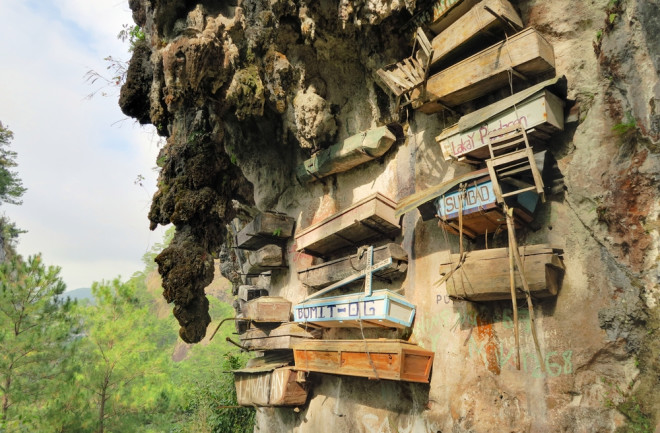
By Donna Sarkar
Grief often accompanies the loss of someone close and can be a difficult process.
“When an individual passes away, they leave a hole not only in our hearts but also in our social networks, in our family lives, in our village, or town or community,” says Shannon Lee Dawdy, professor of anthropology at the University of Chicago.
But what can we do with this gaping hole? For many, hosting a funeral or participating in a death ritual to say goodbye to the deceased channels this grief. Funeral rituals allow people to come together and not only acknowledge their loss, but also come to an understanding of how to go on and re-weave the social fabric, explains Dawdy. Death rituals are much more than just for healing individually; they also allow different communities to unite and fix rips or tears in their social fabric in their own ways, she says.
Cultures around the world have a distinct set of beliefs that guide their funeral rituals. Let’s take a closer look at five unique traditions that celebrate and honor the departed.
1. Endocannibalism: Feasting With the Dead
The earliest instances of cannibalism date back to over 800,000 years in Spain’s Atapuerca Mountains. Anthropologists think early hominids likely used it as a territorial defense strategy. But today, anthropologists find cannibalism is used for more than just survival purposes.
The Wari people of Brazil and the Fore tribe in Papua New Guinea are two examples of tribes that consume deceased community members as a religious or cultural practice. Feasting on the dead is a way for the Wari tribe to socially mourn. They believe the funeral rites allow their ancestors to transform from humans to spirits, and the feast allows an individual to release painful memories that can linger after a loved one’s death.
For the Fore tribe, the cannibalistic tradition calls on women and children to consume the flesh of Fore members. Everything except the gallbladder is removed from the dead body. The remains are mixed in with ferns and cooked in tubes of bamboo that women and children both prepare and consume. While the act is viewed as a symbol of love and grief mixed together, medical researchers have discovered that many Fore tribe members may be victims of a fatal degenerative disease called kuru due to their cannibalistic practices.
2. Finger Amputations
For the women of the Dani tribe in Papua New Guinea, cutting off the top of their finger in a funeral ritual to mourn the loss of a family member or loved one is a cultural norm.
While it’s unclear why the ritual mainly involves women, the ritual, called Ikipalin, is a way for women to physically display their grief. The practice involves tying a string tightly around the upper part of a finger for 30 minutes. This allows the finger to become numb and prepares it for removal. Then, an ax is used to remove the upper half of the finger and the open wound is cauterized, to avoid further bleeding and infection.
The ritual is rooted in religious beliefs that suggest finger-cutting can ward off the deceased person’s restless spirit. Though the Indonesian government recently banned the practice for all tribe members, the aftereffects of the mourning ritual can still be seen on the hands of many older women of the tribe.
3. A Blindfolded Funeral
In the Philippines, blindfolds are not for the mourners, but for the deceased Indigenous people of Benguet. And because of the diversity found in the Philippines’ regions, this is just one of many unique burial rituals. In this practice, the blindfold protects the deceased from the suffering world.
The deceased are cleaned, blindfolded and tied to a chair, which is then placed in the main entrance of a home. The hands and legs are tied together to keep the body in a sitting position for eight consecutive days.
During those eight days, the elders perform a bangil rite, which involves the reading of a biographical chant of the deceased. The mourners also strike bamboo sticks together to ensure that their loved one reaches heaven. The reason why the deceased sits in a chair is so that when they are removed, they can rest in the fetal position.
4. Hanging Coffins
Though the funeral practice of hanging coffins dates to over 2,000 years ago, the Igorot people of the Philippines still practice this ancient burial custom today.
For the tradition, one carves out their own coffin from hollowed logs. The coffins have various intricate designs that represent fertility and longevity. Upon death, the deceased are placed inside their coffins and then hung off the side of a cliff or cave.
The height of the hanging coffin represents the status of the individual. Typically, male community leaders or distinguished members of society are placed higher on the cliff. According to the community’s beliefs, the higher the dead are placed, the greater their chances are of reaching a higher position in the afterlife.
Today, the hanging coffins can primarily be found in the town of Sagada, though many have deteriorated and even fallen over time. Various cultures in China and Indonesia have also practiced hanging coffins.
5. Death Beads
A shortage of burial space encourages a new funeral practice in South Korea. People are transforming a loved one’s ashes into shiny colorful beads. “Death beads” have been growing in popularity since the early 2000s as a way to honor and keep the deceased nearby. A law passed in 2000 now requires anyone in South Korea burying the dead to remove the grave 60 years after burial, which could influence the new practice.
Bonhyang, the death bead company founded by Bae Jae-yul, features beads that range from blue-green to pink, purple and black in color. Ultrahigh temperatures melt and crystallize cremated ashes that are stored in shiny beads, and the process takes just 90 minutes. Instead of wearing the colorful beads as jewelry, many opt to display them inside glass containers in their homes, where they are accessible to the whole family.
Complete Article ↪HERE↩!
Funerals can cost a fortune.
— Here’s how to keep prices in check.
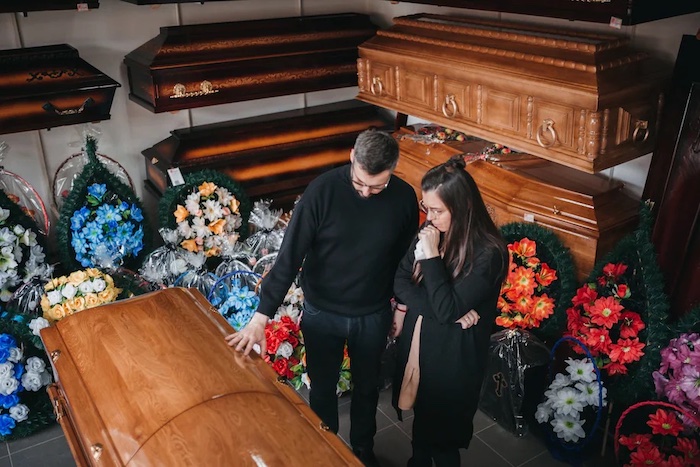
By Kevin Brasler
Grieving for a loved one is acutely difficult. The last thing anyone wants to do just after the loss is sit across from a salesperson in a high-pressure, time-sensitive situation making important and expensive choices.
Funeral homes provide important services, but they are also businesses trying to maximize each sale. Staff may try to sell products and services you do not want or need or that you can’t afford. Most funerals and burial arrangements in the United States cost between $7,000 and $10,000. There is nothing wrong with an expensive funeral if that’s what the family wants. But many families that might prefer a simple, dignified ceremony end up with something lavish and costly.
The nonprofit Consumers’ Checkbook collected ratings from local consumers on funeral homes they had used. Checkbook also evaluated funeral home prices by having undercover shoppers collect their fees and casket prices. Until Oct. 31, Washington Post readers can access Checkbook’s ratings of funeral homes free via Checkbook.org/WashingtonPost/funerals.
Protect yourself from overspending
If you are planning a service, do not go to a funeral home alone. Take along a less-involved companion who can assure you that sensible cost-saving decisions are okay.
Specialized organizations can help with this as well. Nonprofit funeral consumer organizations, also referred to as “memorial societies,” provide consumer education and resources regarding rights and options for burial and cremation. The Funeral Consumers Alliance (funerals.org) is the national umbrella group for affiliated societies. The Washington area has two organizations: the Funeral Consumers Alliance of Maryland and Environs (mdfunerals.org), which also serves the District; and the Memorial Society of Northern Virginia (memorialsocietyva.org).
And while it can be difficult, preplanning your own funeral is sensible and gives valuable input to your survivors when they are forced to make many decisions on short notice. Write down and share your preferences with loved ones, and include them in the process to make sure their emotional needs are met.
What to consider
When discussing options with a funeral home, start by asking for its general price list (GPL). The Federal Trade Commission requires funeral homes to provide a copy of their prices if you ask. Many GPLs are long and confusing, so also request a written itemized quote for services you’re considering.
Some funeral directors may encourage you to come in because “these matters are too complicated to discuss over the phone or via email,” or “we will surely be able to work something out between us.” Checkbook’s advice: Deal only with funeral homes that readily supply detailed pricing information to potential clients without requiring an in-person appointment.
There are several options for disposing of remains. Most families select burial with a traditional funeral, immediate burial or cremation (with or without a funeral).
Burial can be done directly, with no viewing or ceremonies, or with any combination of viewing, ceremony and graveside service. It usually requires a casket; cemetery plot; fees to open and close the grave; cemetery endowment (upkeep); and a marker, monument or headstone.
In Checkbook’s survey of local funeral homes’ prices, costs for a traditional funeral with oak casket ranged from $7,290 to $26,575, with an average of $12,867. Cemetery costs will add thousands to those amounts.
Immediate burial is far less costly if an inexpensive casket is selected. A funeral home files the necessary paperwork, places the unembalmed body in a casket and takes the remains to a cemetery for burial, usually within one day. On average, families will save $5,000 to $6,000 compared with a traditional funeral.
Cremation is an increasingly popular choice. Like burial, it can be direct or after a funeral. Cremation also allows flexibility on the timing and location for services; many families now hold memorial services in their homes or at the deceased’s favorite place.
Cremated remains may be scattered, kept at home, buried in a cemetery or interred in a columbarium. Burial or interment adds to the cost. In Checkbook’s price survey, funeral homes’ fees for direct cremation (no funeral) ranged from $1,295 to $7,595, with an average of $3,343.
The casket is usually the most expensive item in funerals. Casket prices range from less than $1,000 for a wood box to $25,000 or more for elaborate models. The markup on a casket is often three to five times wholesale, so be leery. A funeral director’s advice — and even the design of the selection room — may lure you to pay too much. Most people choose midrange steel or hardwood models for $3,000 to $6,000.
The least expensive containers — cardboard containers or pouches — are adequate for cremation or direct burial. Some funeral homes have rental caskets that can be used for viewing, allowing you to buy a less expensive one for burial.
Checkbook’s undercover shoppers found the least expensive way to buy caskets is to shop online. For example, for an oak casket, the average price quoted by area funeral homes was $3,782; shoppers found a comparable model online for $1,200. Online sellers ship caskets overnight, and by law, funeral homes must use them, if requested.
You also need to choose between a religious and secular service, held at a funeral home, religious establishment, residence or elsewhere. Consider whether you want a traditional funeral, with the casket open or closed, or would prefer a memorial service with no body present. Memorial services, church services and graveside services usually cost less than conventional funerals.
How to pay for it
Check on resources that might help pay for funeral costs. Because many people are not aware of the benefits available for final expenses, money often remains unclaimed. Most death benefits are not automatically sent to survivors and must be applied for.
A lump-sum Social Security death benefit of $255 is available to a surviving eligible spouse or dependent child (under 18).
In April 2021, the Federal Emergency Management Agency launched a reimbursement program to help those who lost loved ones during the coronavirus pandemic. Anyone with covid-related funeral expenses may be eligible for a reimbursement of up to $9,000. You cannot apply for funeral reimbursement money online; you must call FEMA’s covid-19 funeral assistance helpline at 844-684-6333 (TTY: 800-462-7585). There is no deadline for requesting this benefit.
Honorably discharged veterans and their spouses may be entitled to burial in one of 155 national cemeteries in 42 states (and Puerto Rico), with a grave marker and a flag for the casket. Other benefits may be available if the death occurred during active duty or during hospitalization in a veterans’ facility. To check, contact Veterans Affairs’ Veterans Benefits Administration (800-827-1000, benefits.va.gov).
Other possibilities include payments from fraternal organizations, lodges, clubs, union welfare funds, retirement plans and employers.
Many funeral homes push plans that let you prepay for your funeral. These agreements represent major financial commitments, and many unscrupulous places have embezzled customers’ prepaid funds; others have gone out of business without protecting their customers’ prepaid assets. A better arrangement is to open a joint savings account with a likely survivor who will get immediate access to the funds upon your death.
Complete Article ↪HERE↩!
Green Burial Options Can Spur End-of-Life Conversations
A ‘gradual goodbye’ process can ease caregiver stress, aid acceptance

By Lee Woodruff
It used to be that end-of-life discussions — specifically those around final wishes for burial sites and memorials — were limited to a few choices. Does my loved one want a traditional burial or does he want to be cremated? Is there a family plot? Should we opt for a burial spot central to all? These topics, while difficult and sometimes awkward, are critical. And advance planning is one way to ease the anxiety and unknowns that arise in the wake of death and loss.
Sometimes those early discussions can lead you in a surprising direction. For the Groves family, it was choosing a green burial.
Pamela Groves-Gaggioli, 69, of Northfield, Minnesota, started the conversation with her brother Steve Groves, 67, of Stillwater, Minnesota, after their mother asked the siblings to help her find a burial plot where the entire family could visit. Maxine Groves, 92, of Hudson, Wisconsin, had grown up on a farm. And while this remarkable woman was hale and hearty, the Groves family wanted to get what they called “a head-start on the end-of-life conversation.”
“We began looking at some of the cemeteries around our homes and they just didn’t feel right, for one reason or the other,” says Pamela, who had recently lost her own husband of 26 years, Fred. She’d taken Fred’s ashes to Italy and spread some in a gorgeous place in the woods, but she also was determined to find a spot near home where she and her daughter, Maggie, could go and feel close to him.
A growing memorial
A friend told Pamela about Better Place Forests’ St. Croix Valley location, in Scandia, Minnesota, a memorial forest where family members choose a tree and have their cremated ashes mixed with local soil and spread around the tree as a final resting place for themselves and future generations.
Pamela investigated. As she visited the forest, she spotted a red maple with seven branches, the exact number of her extended family members.Maxine Groves was gifted a chainsaw for her birthday from her kids.
Suzy Oswald Maxine Groves was gifted a chainsaw for her birthday from her kids.
Suzy OswaldSomething about the tree struck her. Instead of looking for a plot in the ground, what if, in death, they could all be part of something growing and living, like this tree?
Pamela shared the concept with her brother, Steve; he was all in. As executor of the will, he knew they had to start making some decisions before their mom died, especially with five siblings. When their father had passed away 13 years earlier, nothing had been planned and it had been a scramble during an already sad time. He was determined that the family not repeat that experience.
“We’re a positive, outgoing, nature-connected and close-knit family,” says Steve. “The idea of making our final resting place all together in a forest, each with our own branch, was extremely appealing. For us, it was everything that a traditional cemetery wasn’t.”
The whole family traveled to see the spot. “It was a spectacular day, and we all felt really good about the excursion; upbeat, not sad,” Steve recalls. “My mom could not have been happier. Making this decision and standing around the tree, it was like a 1,000-pound rock had been lifted off our backs.”>

Connecting to nature
Places like Better Place Forests are part of a macro trend of “green end-of-life options” that offer a personalized and eco-friendly solution to end of life. According to the National Funeral Directors Association’s 2022 Consumer Awareness and Preferences Report, 60.5 percent of the Americans surveyed would explore green funeral options for their potential savings and reduced environmental impact. Many of these new options connect people more closely to nature in death, whether it’s planting ashes under fruit trees, a “gentler” water-based cremation like the process used at White Rose Aqua Cremation in California, choosing biodegradable caskets or even using remains to become part of rebuilding vital coral reefs.
Micah Truman, 51, CEO and Founder of Return Home in Auburn, Washington, says “human beings were designed to be returned to the earth.” His company has developed a process called terramation that uses microbes in the body to gently convert human remains into soil. The 60-day process involves placing the body into a vessel with alfalfa, straw and sawdust. Once the terramation process is complete, the families may use the soil in any way they see fit, sharing with others and planting trees or flowers in beloved places.
“It’s so important to begin talking about the dying process and yet it’s still a conversation that most of us are hesitant to have,” he notes.
Over Return Home’s 15 months of operation, Truman has witnessed some unexpected and wonderful moments of connection, conversation and acceptance around death. “People will come to our facility and visit the vessel, sit by it and talk to their loved one,” says Truman. “They decorate the vessel with important keepsakes, and at the start of the terramation process [they] place flowers, food or even letters in the vessel. This gradual way of saying goodbye has been beautiful to observe.”
Less stress, more peace
Being in nature eases pain and grief, says John Collins, CEO of Better Place Forests.
“Even having an end-of-life conversation when surrounded by trees is certainly less stressful engulfed by green leaves and birdsong,” he says. “Unfortunately, for the past century or so, death and end-of-life care have been treated more transactionally and with some remove, as if dying were taboo. … We encourage people to start the conversations here and use the trees as a way to think about their own end of life story. It makes it so much less stressful on both the caregivers and family members.”
Pamela is all for less stress. For her that means making the hard end-of-life choices now. “My daughter Maggie is my only one,” she explains. “I know from personal experience that when the end comes, you’re grieving, and I don’t want to leave her alone trying to make all these tough decisions. I want everything to be easy for her. Out in nature is where I feel closest to God.”
Members of the Groves family say they are happy that the overall cost of their decision of a family tree was less expensive than a traditional burial and family plot, but are also placated by the fact that by being in a protected forest means that no one will ever be able to build there. Steve and his siblings also love that the organization donates trees to areas that have been devastated by forest fires.
“Mom gave us our love of the outdoors as kids going up to the farm, and this decision is a real extension of that,” says Steve. “How can you argue with the fact that you’re being kind to nature and at the same time you’re making everyone happy? That’s priceless to me.”
End-of-Life Conversations
AARP family caregiving expert Amy Goyer offers tips on how to make ongoing discussions go smoother:
• Start early. Bring up the topic in “some day” terms. Don’t wait until a health crisis.
• Watch words. Use language the family member is comfortable with: death vs. end of life; funeral vs. memorial service.
• Use a conversation starter. Ease into the discussion by mentioning an article, book or movie that deals with end-of-life issues.
• Discuss a recently attended funeral. Say, “What did you like? What do you want for your service/burial?”
• Most important: Remind your loved one this is their chance to have their wishes fulfilled. By making these decisions now it will help you and others during a time of sorrow.
Complete Article ↪HERE↩!
Water Cremation Offers Eco-Alternative For Funerals
Funeral traditions around the world vary widely depending on cultural and religious practices, but they often use burial or cremation. Neither method is good for the environment, and green alternatives are gaining in popularity. Aquamation, or water cremation, is a low-carbon, less energy-intensive process that could replace both.
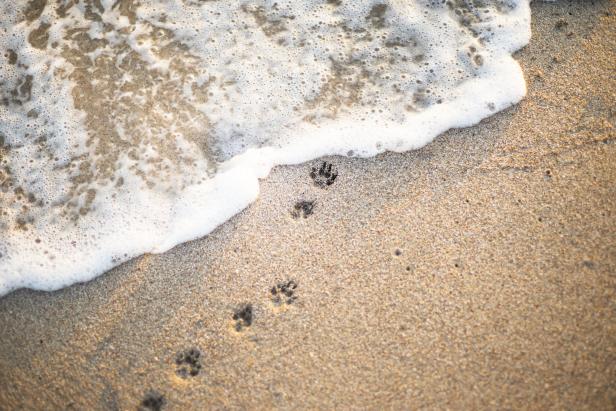
By Robin Fearon
Aquamation, also called resomation or bio-cremation, uses 90 percent less energy than flame cremation. Our bodies are naturally made up of around 60 percent water, so the process uses a technique called alkaline hydrolysis, mixing heated water with potassium or sodium hydroxide (caustic soda) to dissolve body tissue, leaving only bones that are then turned into ash for relatives to keep.
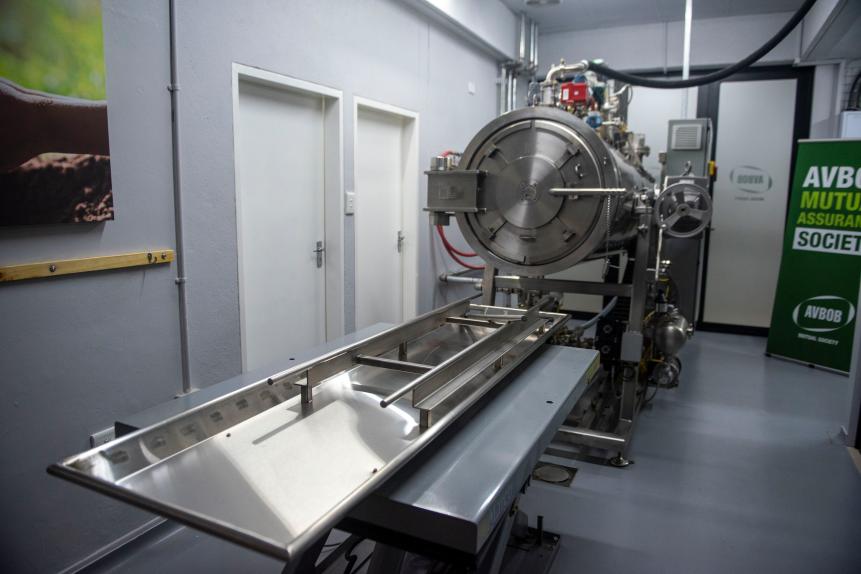
The most common funeral method in the US is traditional cremation, accounting for 58 percent of ceremonies in 2021, with 37 percent opting for burial. Trends show cremation became more popular partly because it is less expensive, but aquamation compares well. It costs roughly the same, though may be more expensive as funeral directors must invest in new technology.
But where aquamation stands out is in its environmental impact. Each year the US uses an estimated 800,000 gallons of carcinogenic formaldehyde-based embalming fluid, two billion tons of concrete used in grave liners or vaults, 115 million tons of steel, and wood equivalent to more than four million single-family homes from caskets. Cremation meanwhile results in millions of tons of carbon dioxide emissions globally each year, as well as toxic mercury released from dental fillings.
Burial plots for people and crematory remain also require a lot of land and maintenance effort. There are 145,000 cemeteries in the US, even in places with no living population, and the question of using land for more productive purposes is valid.
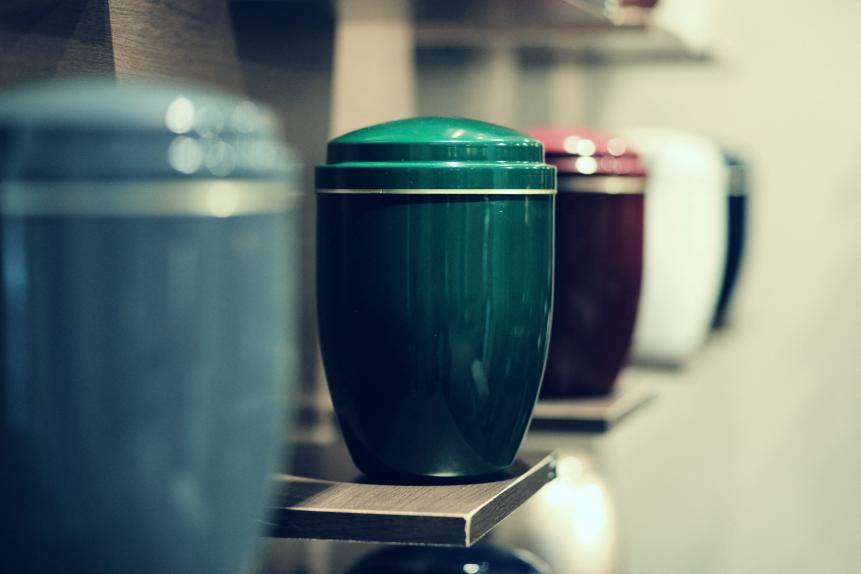
The death of renowned anti-apartheid and human rights activist Desmond Tutu has kickstarted interest in aquamation as a green alternative, after it emerged he requested the method for his own funeral held in January 2022. But the process itself has been around since the late nineteenth century, developed by farmer Amos Hanson to make fertilizer from animal carcasses.
The first commercial system was only installed in Albany Medical College in 1993 to dispose of human cadavers. Universities and hospitals then adopted aquamation into their body donation programs, before it crossed over into the US funeral industry in 2011.
The National Funeral Directors Association said 60 percent of people asked about green funeral options for reasons including their environmental benefits and reduced costs. Aquamation fits that brief.
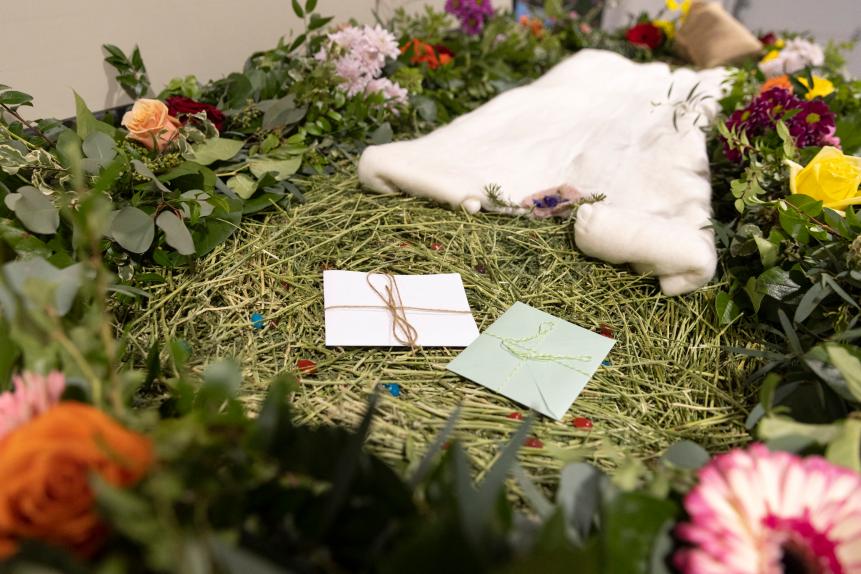
More creative alternatives include converting a loved one’s ashes into a vinyl record, or a pencil, or compressing them into a diamond. But the eco-dream could be to grow into a tree or combine ash remains into a reef ball that is then sunk to the ocean bed so a new coral reef can flourish.
Complete Article ↪HERE↩!
